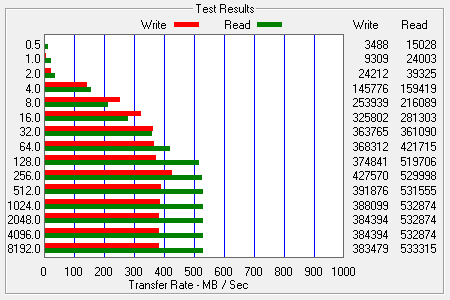Both mSATA and M.2 form factors came out of the desire of notebook, netbook and ultrabook manufacturers to integrate a low profile SSD into their products. 2.5” hard drives and SSDs were too thick to accommodate the thin, light design criteria and mSATA (MO-300) and Slim SATA (MO-297) were the first competing form factors. Slim SATA used a standard 2.5” SATA socket and mSATA ran SATA signals to a PCIe miniCard socket – the same high volume connector used for WiFi and other PCIe peripherals. Skipping to the punchline, mSATA won that battle in the notebook/ultrabook space and Slim SATA became the form factor of choice for the networking market.
As NAND flash $/GB continued to decrease, companies like Apple and others demanded more and more capacity for their mobile computing platforms. mSATA accommodated four NAND placements, so SSD capacities were naturally limited. M.2 (formerly known as next generation form factor or NGFF) will be a bit thinner than mSATA and will be available in four different PCB lengths ranging from 42mm to 110mm, to accommodate more NAND components – and thus higher capacities – than mSATA. In addition, M.2 has two different LGA/BGA designs for use in solder-down applications.
With additional SSD capacity comes additional performance and most companies found they could create SSDs that would completely saturate a single SATA 3Gbps (SATA II) or SATA 6Gbps (SATA III) interface. Since there was no SATA IV on the horizon, it made sense to expand performance with multiple channels or lanes and therefore a new socket was needed. The M.2 socket, which is available from Kyocera ,TE Connectivity and others, will accommodate either two SATA 3G/6G ports or four lanes of PCIe for SSDs. (Note: M.2 has multifunction capabilities for WiFi and other technologies that are beyond the scope of this discussion.)
It is Virtium’s hypothesis that M.2 will win the ultrabook battle, especially as SSD vendors and software providers implement NVM express (NVMe) protocols over four-lane PCIe for maximum performance. It will not be an instantaneous transition, however. Ultrabooks for 2013 into 2014 will use mSATA. Next generation designs may use a SATA implementation on M.2 before finally moving to PCIe plus NVMe in 2015/2016.
For industrial embedded systems, it is our belief that both form factors will coexist. mSATA sockets are already designed into most industrial embedded computing platforms from companies like Kontron, Radisys, Emerson and Advantech. Those systems are just now being deployed and will be around for many years. Since most industrial embedded system capacity and performance requirements are modest (there is a much higher premium placed on reliability and consistency), there are few technical reasons to move to M.2 unless customers are willing to live with the market dynamics – read that as constant product changes – driven by the ultrabook space.
Some systems may need PCIe because there are no “free” SATA sockets, but then consideration will need to be given to software. If the OEM can live with AHCI protocol, PCIe may be an easy choice. NVMe is focused on ultrabook and enterprise types of operating systems and may not be supported by some real time operating systems or customized versions, but at least it is an industry standard. That leaves vendor-specific software drivers that may make it more difficult to qualify multiple vendors.
From a Virtium perspective, implementing SATA on either form factor is easy. We already have a complete line of mSATA products and we will support SATA M.2 form factors as demand dictates. Other implementation details are outlined in our product roadmap, which is not available in the public domain. If you are interested in seeing more,
please contact the Virtium sales team.
SATA M.2 NGFF SSDs |
|
Smaller, lighter, and consuming less power - M.2 drives maximize performance and usage in mobile devices when used as a cache drive (in tandem with a HDD) and offer enough storage space to load an operating system as a bootable drive for embedded applications, ultrabooks, and next generation notebooks.
Note: Solid State Drives DO NOT require defragmentation. It may decrease the lifespan of the drive.
Quick Navigation 42mm Super Boot Drive | 42mm Super Cache 2
MyDigitalSSD Super Boot Drive 42mm 2242 SATA III/6G M.2 NGFF SSD
Super Boot Drive | 42mm (2242) M.2 NGFF | SATA III (6G) | PHISON S9 ControllerYour time is valuable. MyDigitalSSD Super Boot Drive helps you make the most of it!
Featuring the industry leading PHISON S9 controller and Toshiba 19nm Toggle NAND Flash, MyDigitalSSD Super Boot Drive SSDs are easy to install upgrades that provide users increased efficiency with blazing fast Read/Write speeds while minimizing startup and application load times in any device with a 42mm (2242) M.2 NGFF slot - all at a wallet friendly price.
Looking for a boost without sacrificing storage space? MyDigitalSSD Super Boot Drives allow high speeds with a backwards compatible SATA III 6.0Gb/s interface for unmatched performance compared to similar low density drives when used by itself or alongside a spinning hard drive.
Give your NUC, notebook, tablet, Ultrabook, Chromebook/Box, or hybrid PC (a laptop or desktop with mSATA and SATA ports) the upgrade it deserves, give it a Super Boot Drive SSD and discover what you've been missing.
More info:
Test Environment:
Lenovo IdeaPad Y510p, 2.4 GHz Intel Core i7-4700MQ, 8 GB DDR3, Windows 8 64-bit, NVIDIA GeForce GT750M with 1TB HDD and open M.2 slot.
Disclaimer: Results may vary based on computer configuration, environment, and testing methods.





No comments:
Post a Comment